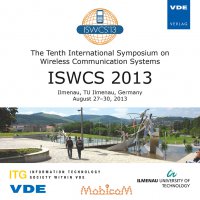Spectrum occupancy in big cities – comparative study – Measurement campaigns in Barcelona and Poznan
Konferenz: ISWCS 2013 - The Tenth International Symposium on Wireless Communication Systems
27.08.2013 - 30.08.2013 in Ilmenau, Deutschland
Tagungsband: ISWCS 2013
Seiten: 5Sprache: EnglischTyp: PDF
Persönliche VDE-Mitglieder erhalten auf diesen Artikel 10% Rabatt
Autoren:
Kliks, Adrian; Kryszkiewicz, Pawel (Chair of Wireless Communications, Poznan University of Technology (PUT), Polanka 3, 60-965 Poznan, Poland)
Pérez-Romero, Jordi; Umbert, Anna; Casadevall, Ferran (Dept. of Signal Theory and Communications, Universitat Politècnica de Catalunya (UPC), C/Jordi Girona, 1-3, 08034 Barcelona, Spain)
Inhalt:
In this paper a comparative study of two measurement campaigns carried out in Barcelona, Spain, and Poznan, Poland, to identify spectrum occupancy in different bands, is presented. In both cases the measurement setup was harmonized to obtain comparable results. The problem of efficient noise floor estimation was also considered and a pragmatic approach that takes into account both internal and ambient noise has been proposed. Obtained results show significant amount of unused spectrum, with similar results for both sites when analyzed globally (average spectrum occupancy of 27% in Poznan and 22% in Barcelona). On the contrary, when going to the detailed analysis of some specific bands, more relevant differences are obtained. These differences have been observed mainly in the Terrestrial TRunked RAdio (TETRA) bands that in Poland are also used by Code Division Multiple Access (CDMA) 450, as well as in the bands of theGlobal System for Mobile communications (GSM) due to the effects of Universal Mobile Telecommunications System (UMTS) refarming in the 900 MHz band.


